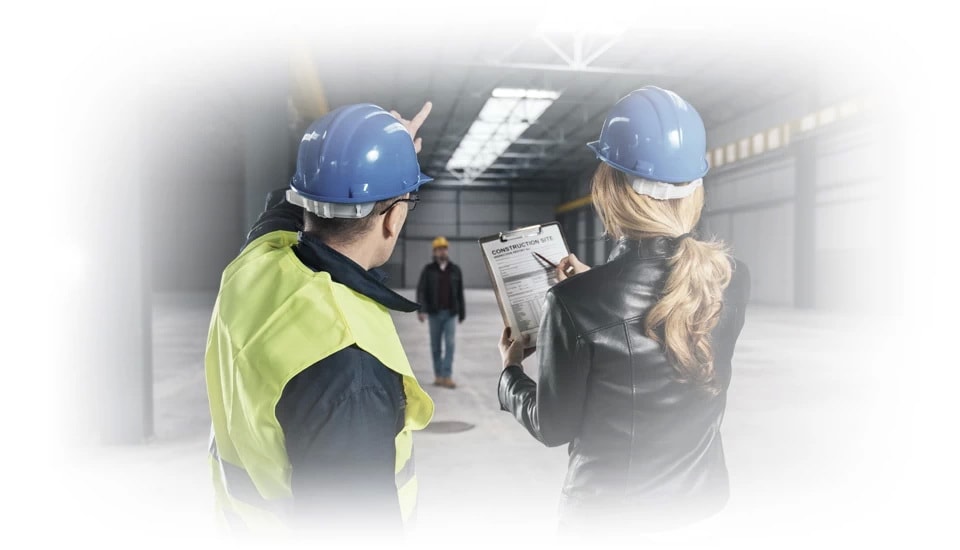Indoor noise is the noise that arises or reaches the interior of buildings. Indoor noise can be divided into indoor noise and outdoor noise.
It is very dangerous for people to stay in a room where noise levels are exceeded. Often we are not aware of this, because an already dangerous level of noise does not bring any pain at the moment of impact. However, its long-term effects can be very annoying. Constant exposure to noise can lead to many health problems related to concentration, sleep disorders or the cardiovascular system.

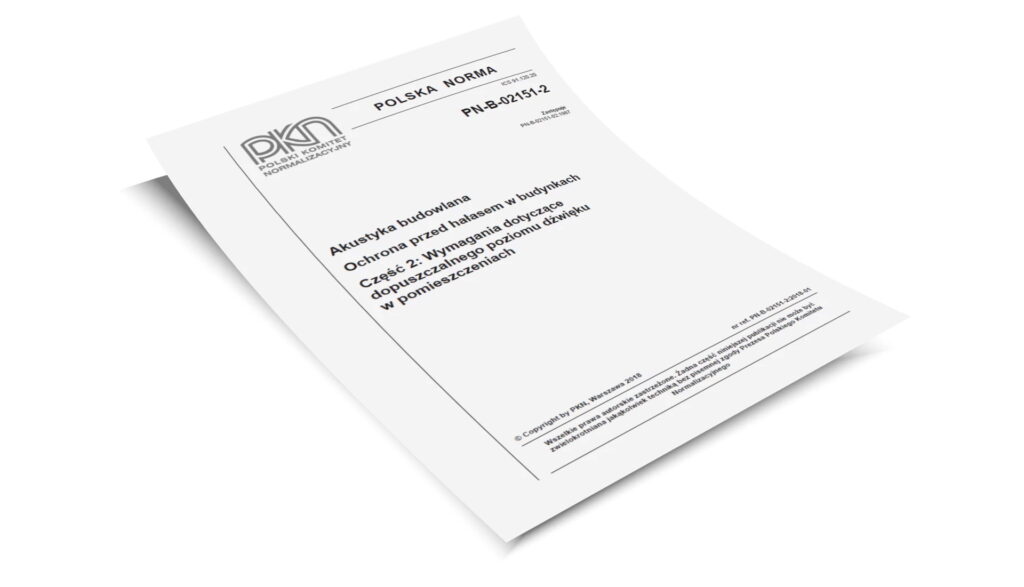
In Poland, the key standard is the PN-87/B-02151/02 “Building acoustics – Noise protection of rooms in buildings – Permissible values for sound levels in rooms” and PN-87/B-02156 “Building acoustics – Methods of measuring A sound levels in buildings.” Both of these standards are valid in the context of noise measurements in rooms.
Most often we associate the effects of noise on our health directly with our auditory system. All the ailments that noise can cause are attributed to, for example, earache or tinnitus. However, the effects of noise on our health are much more extensive and may involve other consequences. If we are exposed to noise in our workplace, it is suggested that we use hearing protectors. Noise is the most common unwanted sound for people, but health problems can also come from listening to music loudly for long periods of time or using in-ear headphones. It is advisable to choose in-ear headphones or limit the amount of time listening to music at high volume.
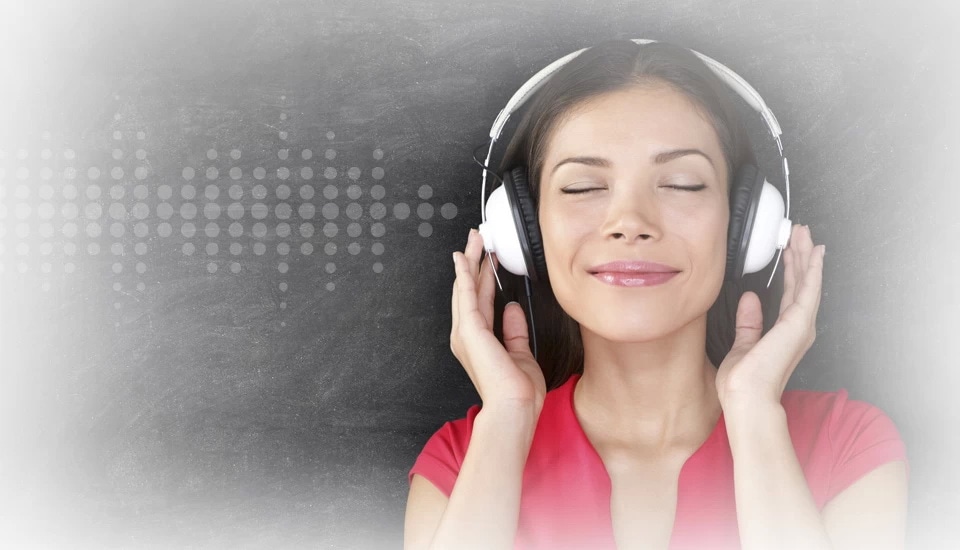
The first step to start with is to take measurements. A company whose employees may be exposed to noise should also order such measurements for the safety of employees. Reacting in a timely manner can save the employer from long-running lawsuits. Such measurements can be outsourced to accredited testing laboratories. Such a laboratory also operates at SVANTEK. Thanks to accreditation, our measurements can be evidence in court, if there is a need to assert one’s rights and compensation. As part of the measurements, we offer a full analysis of noise in the room, together with an assessment of noise exposure in accordance with current normative guidelines.
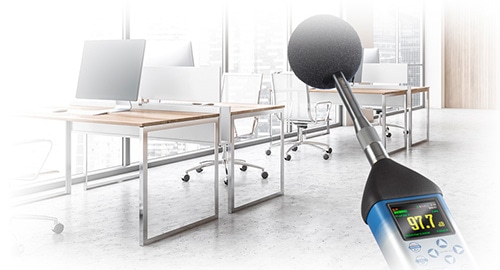
In Europe, the binding standards are DIN 45635 “Measurement of noise emitted by machines; airborne noise emission; enveloping surface method; basic method, divided into 3 grades of accuracy” and ISO 1996 “Description and measurement of environmental noise.”
In Poland, the most binding standard is PN-87/B-02156 – which deals with methods of measuring noise in rooms. The second standard is PN-87/B-02151/02 – which deals with permissible values of sound levels in rooms. Both of these standards are related to the Regulation of the Minister of Infrastructure of April 12, 2002 on the technical conditions to be met by buildings and their location. This regulation enforces noise control in buildings on the basis of the two aforementioned standards.
Noise can be either steady or transient and intermittent. To evaluate established noise using the measurement of the sound level A-weighted in dB, a several measurements should be taken and then averaged. You can also take measurements in octave bands to enrich the noise assessment with additional data. Transient and intermittent noise should be measured using the equivalent A sound level measured throughout the evaluation. In addition, for installation noise, the maximum A sound level read at the time constant “slow” should be measured in addition. However, this standard does not consider infra- and ultrasonic noise. Its scope is based only on the range of audible noise.
Steady-state noise is noise with differences of 5 dB or less over time. Transient noise has differences of more than 5 dB – it is less uniform, and may have intervals of observation. Unsteady noise that is interrupted by silence is considered transient noise.
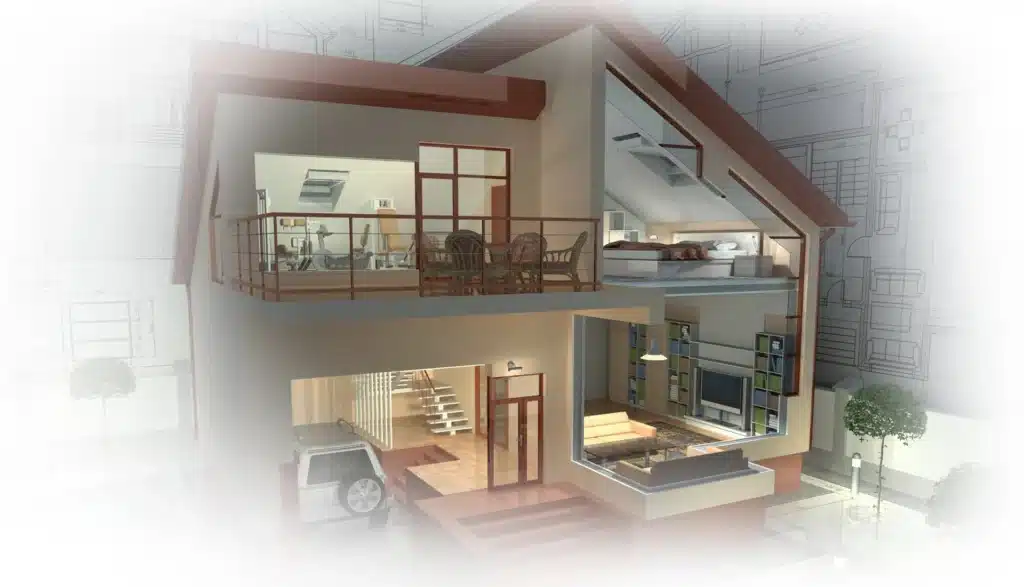

Permissible levels in buildings for different types of rooms depend on the source of the noise, the time of day or night or the purpose of the room. The most restrictive requirements during the day and night are for bed rooms in hospitals in intensive care units. In contrast, the least restrictive standard looks at cafes, restaurants and stores. This is the right approach, because the standard takes into account rooms where acoustic comfort is very important. Such rooms as stores and restaurants are used by many people at one time, so the noise there can be higher.
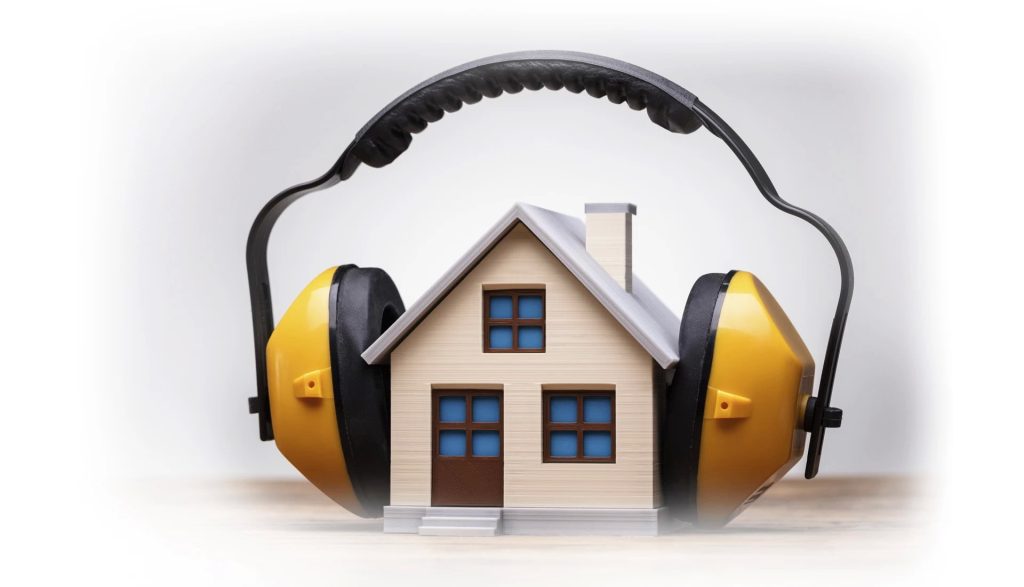
The chosen measurement time should well characterize the type of noise to which people in the building are exposed. Daytime evaluation time is usually calculated from 6:00 a.m. to 10:00 p.m. Within this time frame we measure continuously for the 8 most unfavorable hours. As nighttime hours, we take 10:00 pm to 6:00 am, and here we select 30 minutes from the most unfavorable hour.
It is necessary to measure the equivalent noise level A or the average noise level A-weighted. During the measurement, doors and windows should be closed, but there should be adequate air exchange in the room. The appropriate amount of air per m2 of room is defined by other standards. However, returning to noise measurements, indoor noise sources should be turned off and furniture should not be changed. Only 2 people operating the meter are allowed in the room during the measurement. The standard also defines the precise setting of measurement points and their number. The number of measuring points strictly depends on the volume of the room. In some cases, it will also be necessary to determine the background sound level. Two corrections must be added to the measured level – one taking into account the influence of the acoustic background, and the other taking into account the acoustic absorption. Correction values are defined in the standard.
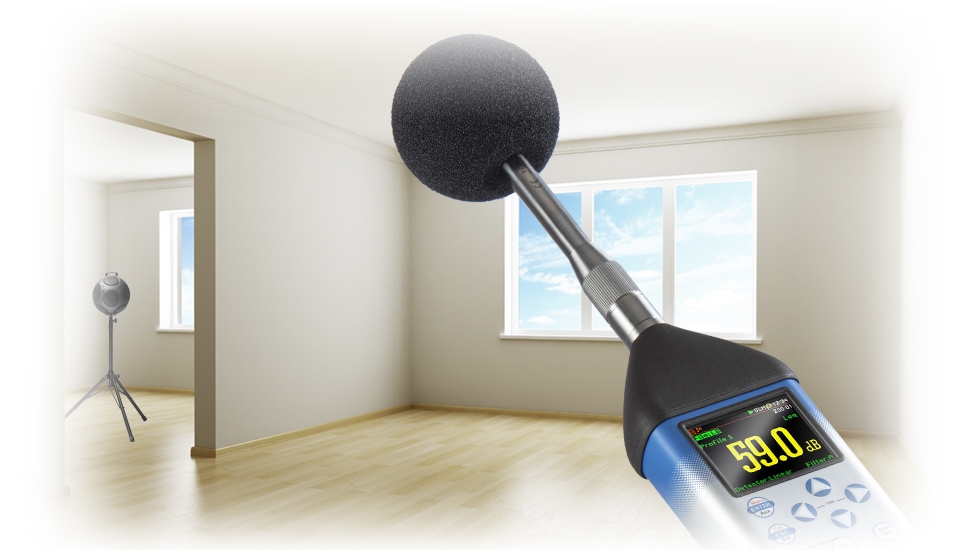
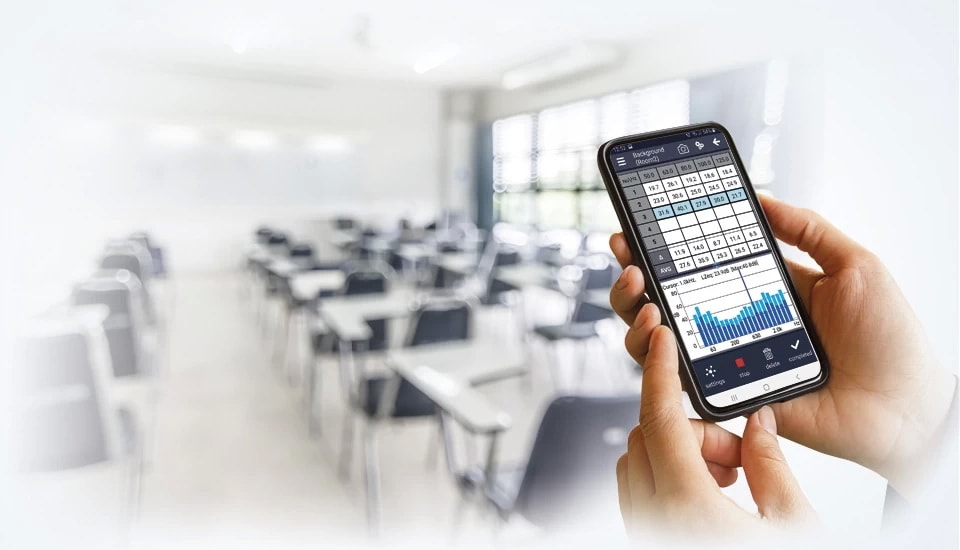
The background sound level is the average or A-equivalent sound level measured when the noise source we want to measure is turned off. We measure this level at the same points where we measure the noise level.
Measurements should be carried out with meters in accordance with IEC 61672-1. All meters from SVANTEK meet these requirements and comply with the current requirements of the standards. In addition, most meters have a declaration of conformity with the requirements for Class 1 accuracy. SVANTEK meters also allow audio signal recording – so when analyzing the measurement results, incidents such as the passage of an ambulance can be excluded.
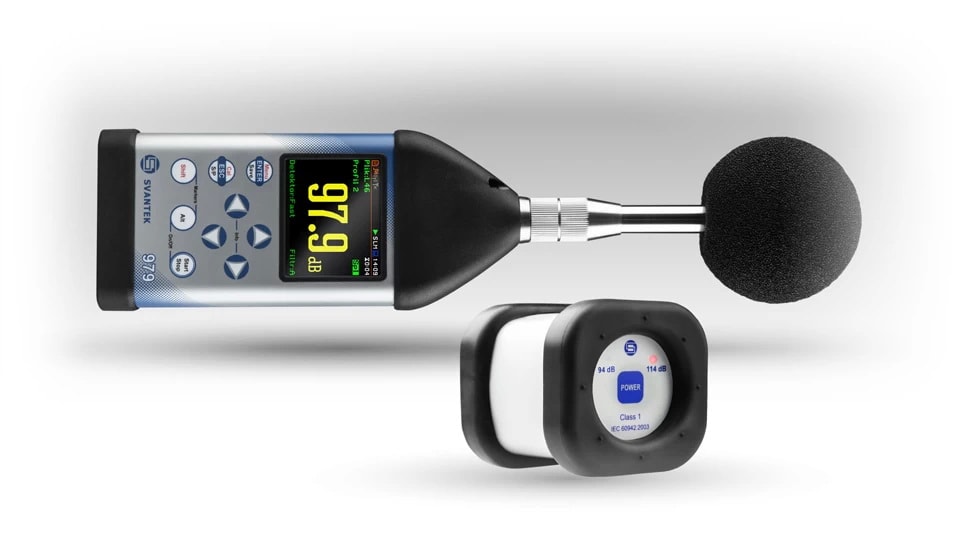
Measurement of noise from technical building equipment should be measured in a different way than noise from external sources. First of all, it is necessary to measure the maximum sound level A at a distance of 1 m from the installed equipment in the room in question. The standard also defines the corresponding limit values for this measurement. Sources of such noise can be crane engine rooms, ventilation, transformer rooms, heat substations or pumps.
Noise penetrating into a building from outside can be generated by the passage of vehicles, trains or streetcars, but also by industry. Sources of noise can also be air conditioners, gates or wholesalers operating in the open air. In addition, it is also necessary to consider noise generated by equipment installed in the building, which is its technical equipment. In the case of residential buildings, noise can be generated by tenants from other rooms.
Noise is best reduced at the source. If the noisy element is vehicles the most right thing to do is to upgrade roads or tracks. In addition, acoustic panels also work well in this case. In situations where it is not possible to act on noise at the source, one can insulate oneself from noise by using appropriate acoustic plaster, dense concrete blocks, or doors and windows with appropriate sound insulation parameters. If one is exposed to noise at the workplace, it is possible to use hearing protectors, which can deal with noise very effectively.

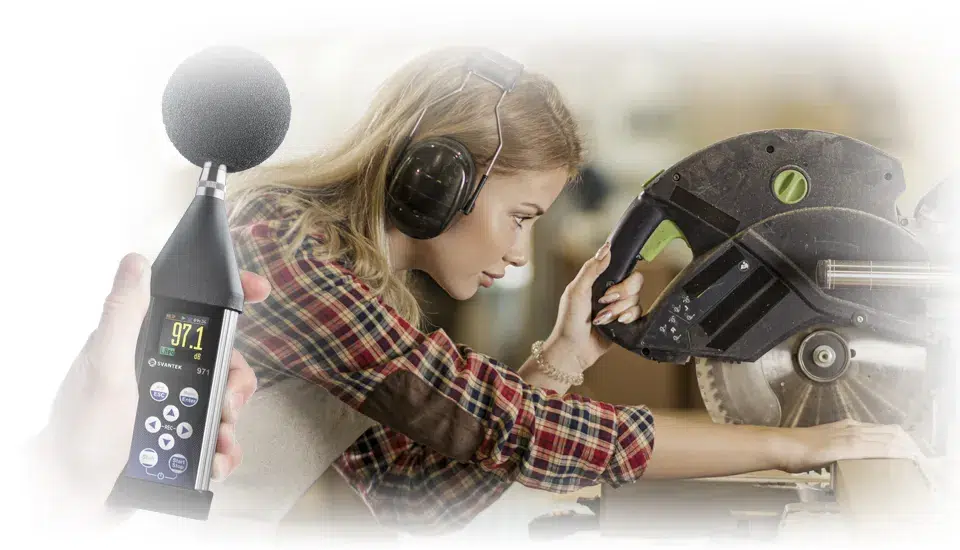
For analyzing noise at the workplace, audible noise and ultrasonic noise are analyzed. For the purpose of measurement, three values are measured – the noise exposure level related to an 8-hour daily working time, the maximum sound level A and the peak sound level C. The limit values for these parameters are set at 85 dB, 115 dB and 135 dB, respectively.
Indoor noise should be measured before appropriate testing laboratories. To have a guarantee of correctly performed measurements it is good to use accredited measuring units. The SVANTEK research laboratory relies on top-class measurement equipment in its evaluation. We also have very extensive experience in performing such measurements. In our reports you can find full identification of noise sources, precise measurements and analysis of the results obtained.
